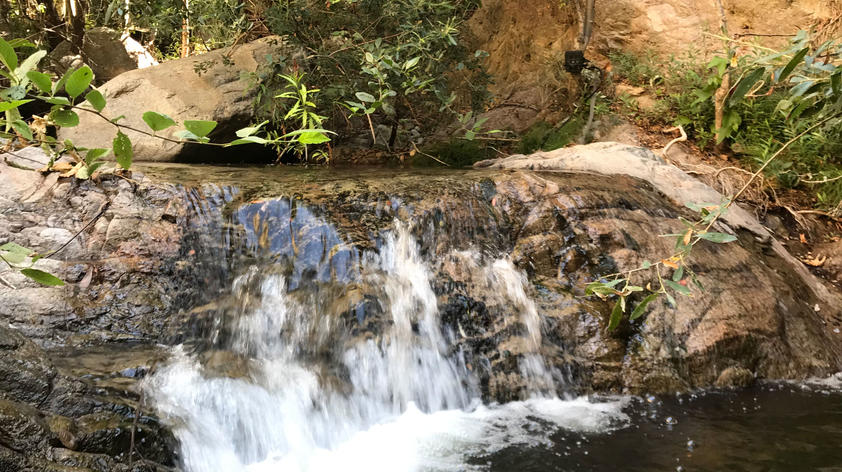
Froggy boot camp
Reintroduction programs rely on the ability of the released animals to thrive outside of managed care. But it’s hard to be a successful frog in the wild when you’re released into a giant, unfamiliar world full of predators and extreme environmental conditions.
This spring, the mountain yellow-legged frog team at ICR will be hosting a ‘froggy boot camp’ to prepare captive-bred frogs and tadpoles for release into the wild. This boot camp will be comprised of two components: exposing tadpoles to a common predator seen in the wild, and creating a fast-moving stream environment for the metamorphs.
The ideas behind this endeavor came from survey efforts at one of the San Bernardino release sites. This site was historically inhabited by mountain yellow-legged frogs and comes with multiple waterfalls, fast flowing water, and an abundant population of two-striped garter snakes (a common predator of tadpole, metamorph, and juvenile mountain yellow-legged frogs).
This year over 200 animals were released into this site and a few recently released individuals were found (by long-range pit tag reader) inside of garter snakes or in the process of being consumed by garter snakes during the 2020 site surveys post release.
To aid in the training of the tadpoles and frogs, a young two-striped garter snake will be used as both a visual and olfactory (scent) stimulus to help introduce and eventually train mountain yellow-legged frogs to avoid these predators in the wild. This idea of ‘training’ animals to avoid predation has been successfully implemented with a variety of endangered species, including in the Institute’s ʻAlalā and Pacific pocket mouse programs.
With the help of the new snake team-member, the frog team at the Institute will now be able to introduce young animals to a common predator that they will have to face upon release.
Hopefully these early-life experiences may increase survivorship of the hundreds (sometimes thousands!) of tadpoles and frogs released each year.
The second component to the ‘froggy boot camp’ is to introduce the animals destined for release to a stream-like environment. A similar study was conducted in 2019 using waterjets and rock formations within the animal’s tanks to create a more naturalistic environment with faster flowing water in captivity.
Preliminary results indicate that the animals kept within the stream environments exhibited stronger jumping and swimming performance, and even had a slightly higher recapture rate after release in comparison to frogs in the control group (which had slow-moving/still water).
In 2020 the frog team plans to expand on this promising work by examining effects of fast, medium and slow moving water on development and eventual survivorship in the wild in mountain yellow-legged frogs of multiple age classes.
Many animals struggle with the harsh reality of the real world when they were brought up in such an easy, lush environment. The frog team’s endeavors will hopefully increase survivorship by better preparing animals destined for release with a more accurate environmental portrayal of their release site and future home.













